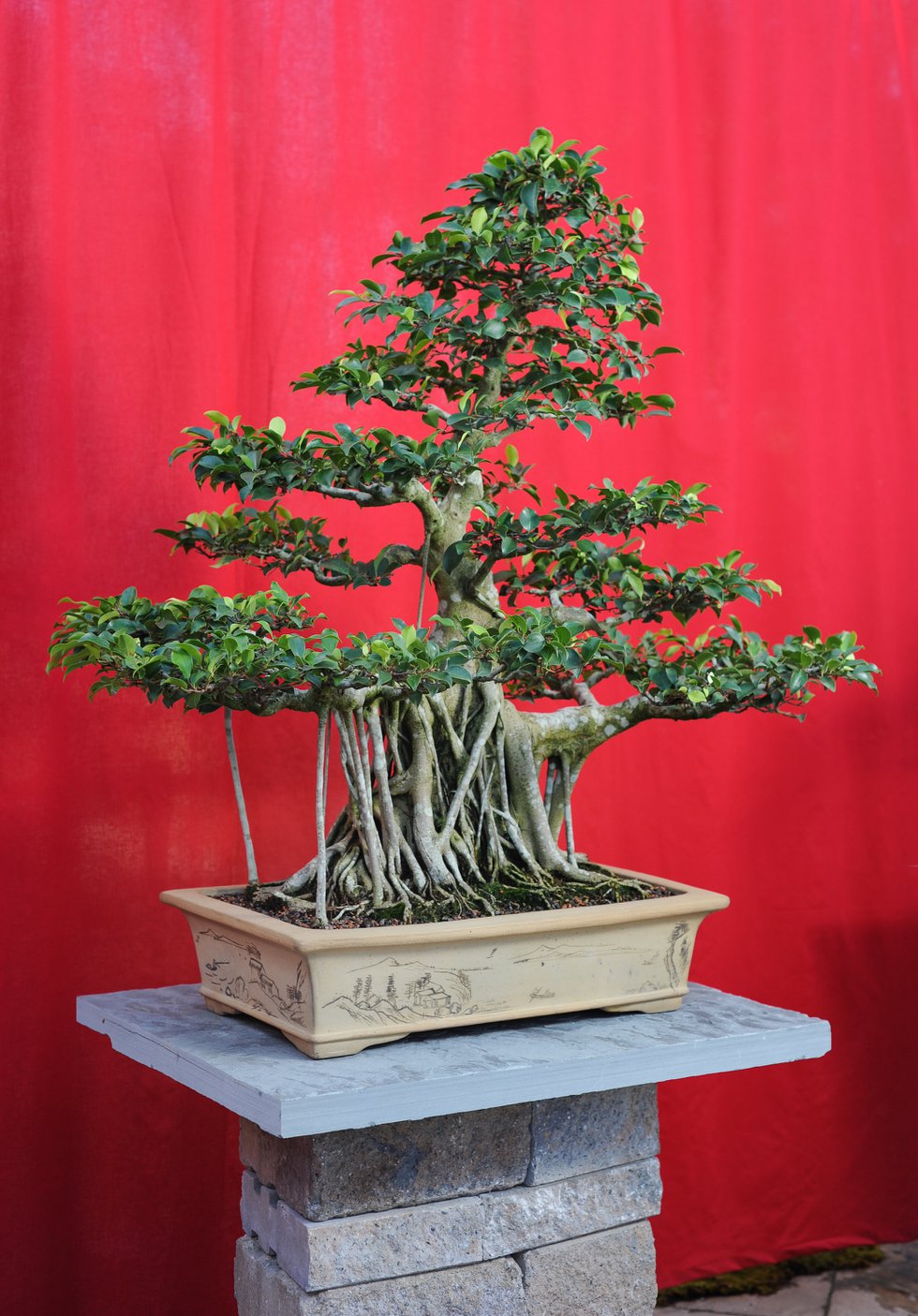The Bonsai Exhibit at Lewis Ginter Botanical Garden gets you thinking and relaxing.

(Photography by Tim Snyder)
At Lewis Ginter Botanical Garden, a bonsai exhibition (ending February 25) showcases the work of Todd Stewart and Bob Chilton, two leading experts from Gardens Unlimited—a Ruther Glen nursery that specializes in the Japanese horticultural art of cultivating miniature trees. The exhibit, titled “For the Love of Trees,” includes both trees collected from the wild (called yamadori) and from urban settings (urbandori). Each of the trees on display—they’ll rotate weekly during the exhibit—has been under cultivation for more than 30 years, with some topping 100 years old.
Unnatural Naturalness:
Like holding a mirror up to nature, bonsai styling typically mimics how a full-sized, mature tree appears in nature. A common way of controlling the bonsai’s growth, Todd Stewart says, “is wire-shaping,” as well as careful, detailed pruning. Stewart views the process as a collaboration between the tree and its human caretaker.
Growing is a balancing act: controlled by the size of the pot (in Japanese, the word bonsai translates literally to “planted in a container”). “The plant recognizes what you want,” Stewart says. But the gardener is mainly there for support. Stewart laughs that “like people, they can be very demanding.”

(Photography by Tim Snyder)
Five Prominent Styles:
- Formal Upright: perfectly straight trunk
- Informal Upright: S-shaped trunk
- Cascade (semi/full): bends outward/reaches the planer bottom
- Windswept: branches on one side
- Shari: using deadwood, usually on the trunk
Each Tree has a Story:
One bonsai at the exhibit, a Jaboticaba, was found in Florida, about ten feet from an alligator-inhabited swamp. Not only was it found in a unique location, but the shape it’s grown into is unusual as well. One faux pas of styling is to have branches crossing in front of the trunk. However, Chilton says that the Jaboticaba is one of his favorite bonsai. Sometimes, he admits, weird just works.
Just across the exhibit from the Florida find, a Sea Grape bonsai is potted in a teak fruit bowl. The look of wood on wood is starling and fresh, and it goes back to the idea that each bonsai is unique and personalized.

(Photography by Tim Snyder)
Many of the bonsai are in the “Shari” style, with deadwood on the specimen preserved. Even though they may have been injured by disease and weather or have looked “damaged,” the plants were transformed through care—now some of the best bonsai in the exhibit. The deadwood is kept clean to prevent disease and insect infestation, creating a dynamic white streak in the otherwise brown and green color scheme.
Right Plant, Right Spot:
A juniper bonsai should remain outside during the winter months to allow the necessary dormant phase it would experience in the wild. But bonsai varieties are not limited to junipers. Maples, pines, azaleas, camellias are also ripe for cultivation as bonsais. Sub-tropical species—like maples or pines—should be taken inside during colder months.
Most bonsai need daily watering, depending on pot size and plant type. It is also important to replant them in fresh soil at regular intervals. Check every spring for signs that the tree is becoming pot-bound. When roots circle at the bottom, the tree needs to be repotted. Fresh soil is also helpful, as it can absorb the nutrients and eventually starve.
The exhibit at Lewis Ginter is not only lovely and loving-created, but it showcases a variety of very small and larger specimens. And which one is Stewart’s favorite? “I love all my plants,” he says.

(Photography by Tim Snyder)

(Photography by Tim Snyder)
(Photography by Tim Snyder)








